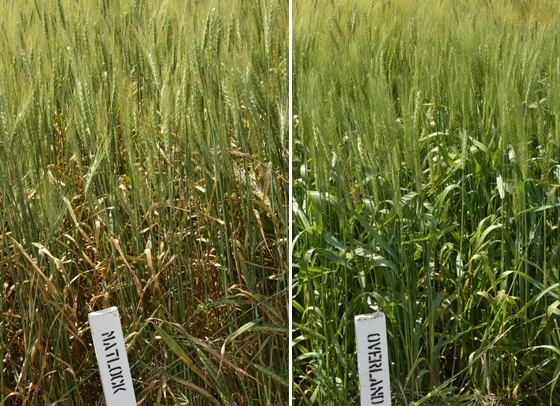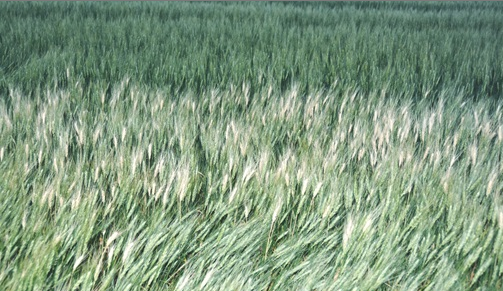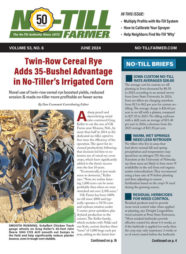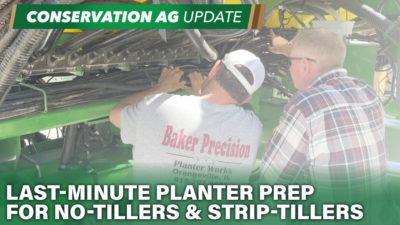Source: South Dakota State University Extension
By Emmanuel Byamukama and Jonathan Kleinjan
Winter wheat planting is just around the corner and may have already begun in some areas west of the Missouri river.
One of the most cost effective and sustainable disease management practices is careful selection of the cultivar to be planted.
Cultivar selection can make a large difference in profit margins, even when all other management practices are performed correctly.
Consider Your Farm's Needs
Cultivars will respond to inputs and stresses differently. The initial step in deciding which cultivar to plant is to look at your farm needs, your field history, and conditions at planting.

Figure 1. Comparison of disease pressure (stripe rust) on two winter wheat cultivars planted side by side at Volga, 2015.
For instance, are you planting wheat on wheat, or wheat on wheat fallow? In this case, selecting a cultivar with good leaf disease tolerance would be advisable (Figure 1). If you are in an environment that gets moderate levels of moisture, selecting a cultivar with resistance/tolerance to scab is recommended (Figure 2).
There are diseases, such as leaf, stem, or stripe rusts, which appear nearly every season but do not overwinter in South Dakota. Their severity will depend on the time of arrival, the weather conditions, and the susceptibility of the cultivar planted. For these types of diseases, it is better to plan that they will appear, rather that to hope that they do not.

Figure 2. Fusarium head blight incidence in two cultivars: susceptible (foreground) and resistant (background).
Crop Performance Testing: A Useful Tool
Although there is little information published on wheat cultivar disease ratings, producers ought to keep records of cultivar performance for future decisions.
The SDSU Crop Performance Testing (CPT) publishes winter wheat yield, protein, and test weight information along with some disease ratings. The CPT trials are carried out across the state and producers can choose data from a nearby location to decide on which cultivar best suits their environment.
For more information, view the 2015 Winter Wheat Variety Trial Results.
Unlike some traits in corn and soybean, such as herbicide resistance, that cost extra, the cost of winter wheat seed that has disease resistance/tolerance is the same as for seed without resistance/tolerance. So why not take an advantage of this and choose a cultivar that is both high-yielding and tolerant to diseases?
Other Considerations
Other practices to consider at planting that influence disease development are crop rotation (for reduced source of inoculum), time of planting (delay planting if the area is known to have wheat streak mosaic virus outbreaks) and fungicide seed treatment (for fields with a history of root and crown rots).






Post a comment
Report Abusive Comment